A strong solar flare measuring M9.0 erupted at 23:07 UTC on February 10, 2024, from geoeffective Active Region 3576. The event started at 22:56 and ended at 23:14 UTC. An Earth-directed CME is likely.
The event was associated with a Type II Radio Emission with an estimated velocity of 2 170 km/s. Type II emissions occur in association with eruptions on the Sun and typically indicate a coronal mass ejection (CME) is associated with a flare event. A Type IV Radio Emission was detected at 23:05 UTC. Type IV emissions occur in association with major eruptions on the sun and are typically associated with strong coronal mass ejections and solar radiation storms.
A 10cm Radio Burst (Tenflare) lasting 5 minutes and with a peak flux of 360 sfu was also associated with the flare event. A 10cm radio burst indicates that the electromagnetic burst associated with a solar flare at the 10cm wavelength was double or greater than the initial 10cm radio background. This can be indicative of significant radio noise in association with a solar flare. This noise is generally short-lived but can cause interference for sensitive receivers including radar, GPS, and satellite communications.
Region 3576 is located in the center of the disk and has a ‘beta-gamma-delta’ magnetic configuration — capable of producing more strong to major eruptions.
Its location suggests any CME produced by it today and over the next couple days would likely be Earth-directed.
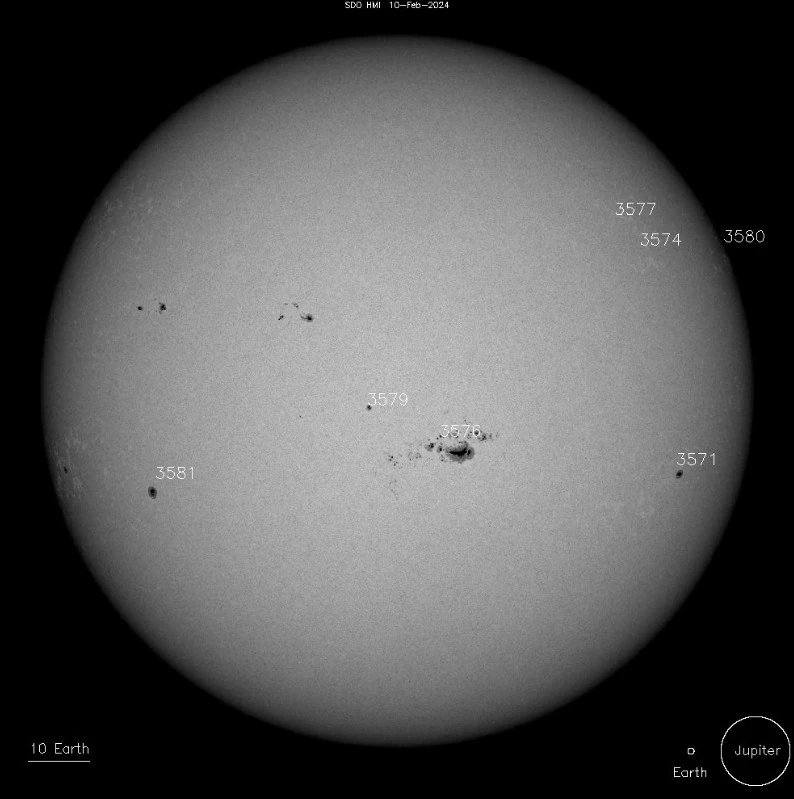

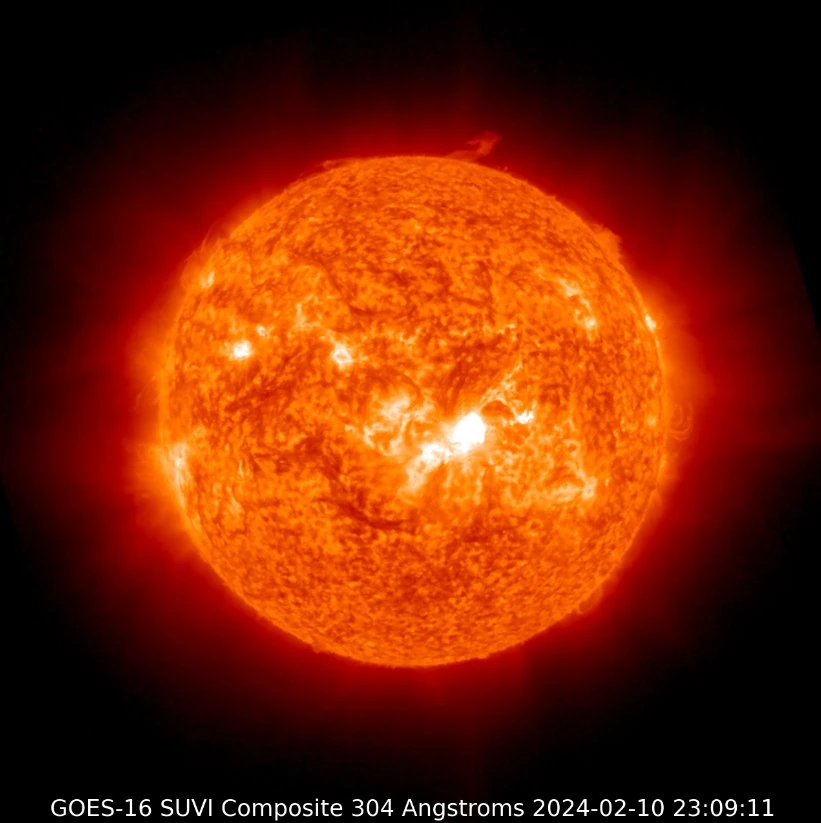

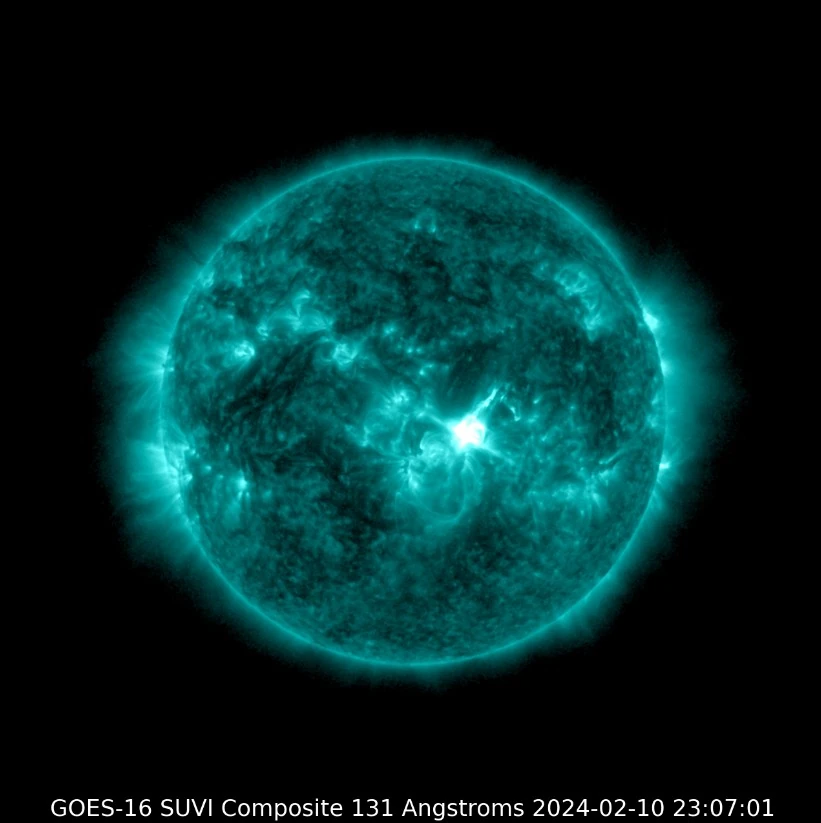

Radio frequencies were forecast to be most degraded over the Pacific Ocean at the time of the flare.
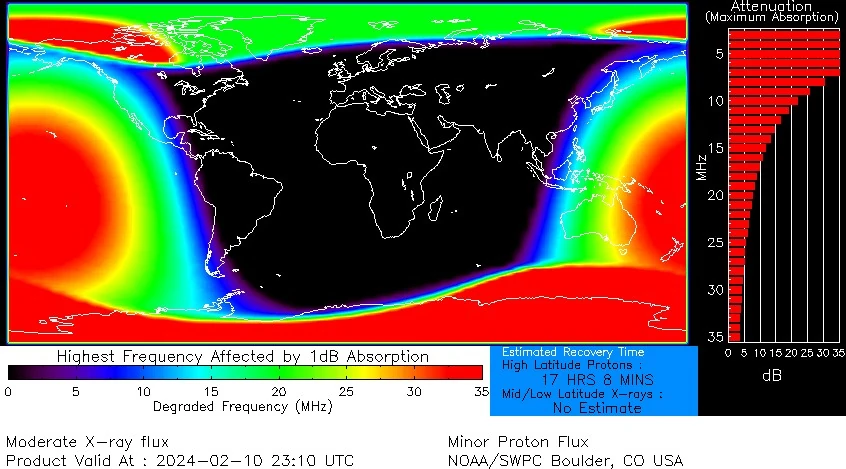

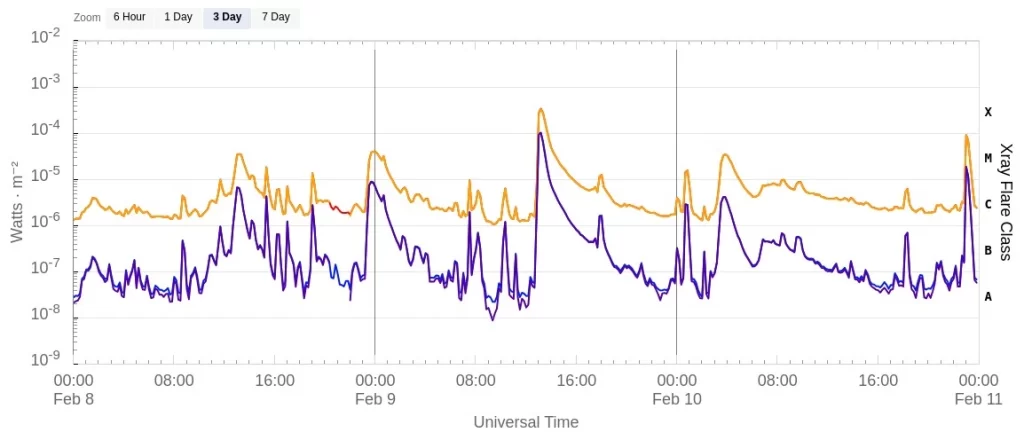

The flare comes one day after the old region (located beyond the SW limb) produced an X3.3 solar flare. Associated with this event was a 1 000 sfu Tenflare, a Type IV radio sweep and a partial-halo CME off the SW limb beginning at 13:25 UTC on February 9. The CME is not expected to have any Earth-directed component given its position beyond the SW limb.
Other notable events over the past 36 hours include a long-duration M3.4 flare observed from a region beyond the ESE limb at 03:54 UTC today. A partial-halo CME was observed off the SE limb beginning at 03:36 UTC. The CME is not expected to have any Earth-directed component given its position beyond the SE limb.
Region 3576 (S16W02, Fkc/beta-gamma-delta) produced two M-class flares; an M1.2 at 18:00 UTC yesterday and an M1.5/Sf at 00:51 UTC today.
A filament eruption centered near S37W02 beginning at 20:00 on February 8 was reanalyzed. A likely associated CME was observed off the S limb at 01:54 UTC in SOHO/LASCO C3 imagery. Modeling results indicated the potential for a grazing blow mid to late on February 12.
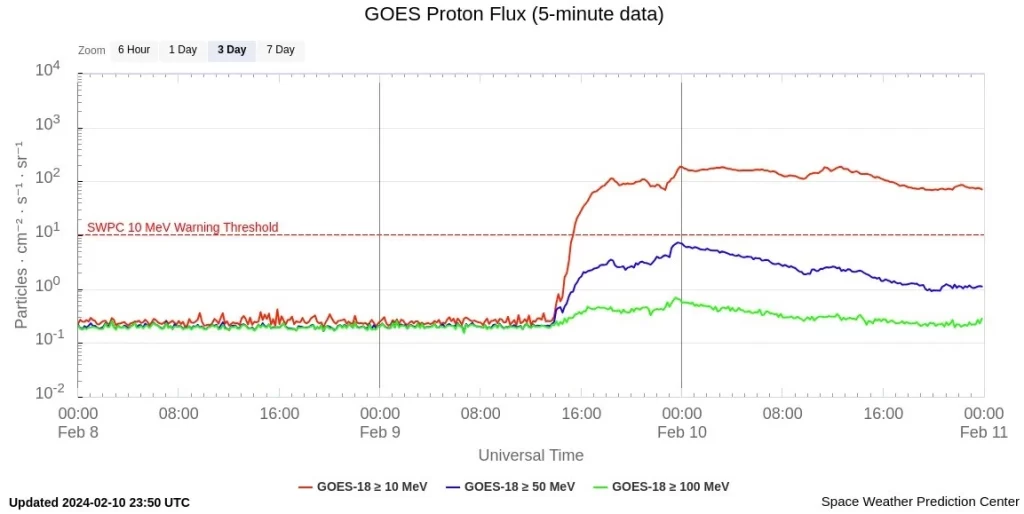

The greater than 10 MeV proton flux began to increase at 14:00 UTC on February 9 following the X3.3 flare. S1 – Minor levels were reached at 15:30 UTC and S2 – Moderate at 18:15 UTC.
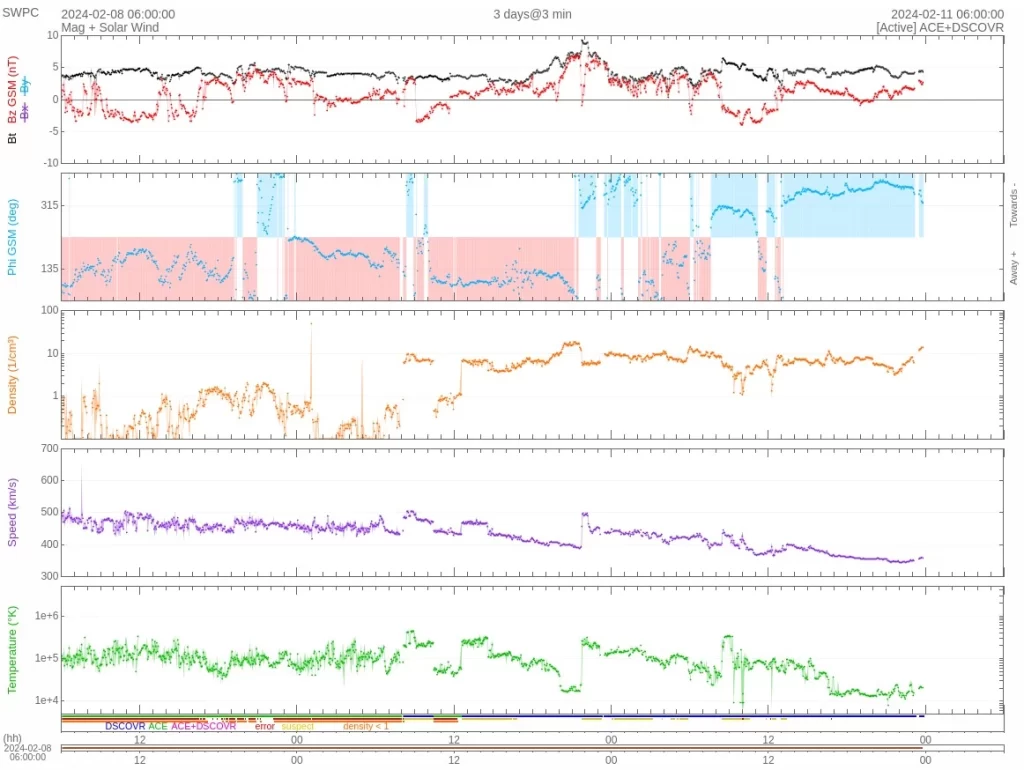

References:
1 Forecast Discussion – Issued: 2024 Feb 10 1230 UTC – Prepared by the U.S. Dept. of Commerce, NOAA, Space Weather Prediction Center
Featured image credit: NASA SDO/AIA 304, Helioviewer, The Watchers
If you value what we do here, create your ad-free account and support our journalism.
Long-duration M5.1 solar flare erupts from Region 3575
Wednesday, February 7, 2024
Long-duration M4.2 solar flare erupts from Region 3575
Tuesday, February 6, 2024
M6.7 solar flare erupts from Region 3559, producing S2 – Moderate solar radiation storm
Monday, January 29, 2024
Multiple M-class solar flares and CMEs, possible CME impact on December 27
Monday, December 25, 2023
Moderately strong M4.2 solar flare erupts from Region 3519
Thursday, December 21, 2023
X2.8 solar flare produces Earth-directed CME, impact expected late December 16 to early December 17
Friday, December 15, 2023
M5.8 solar flare and multiple CMEs, minor geomagnetic storms expected by December 16
Thursday, December 14, 2023
